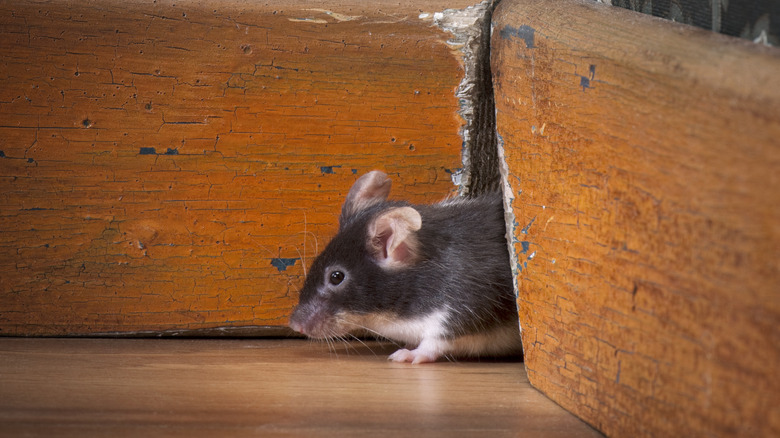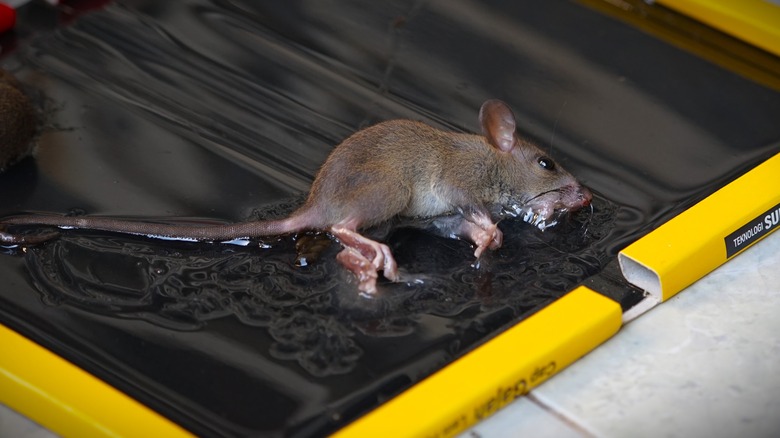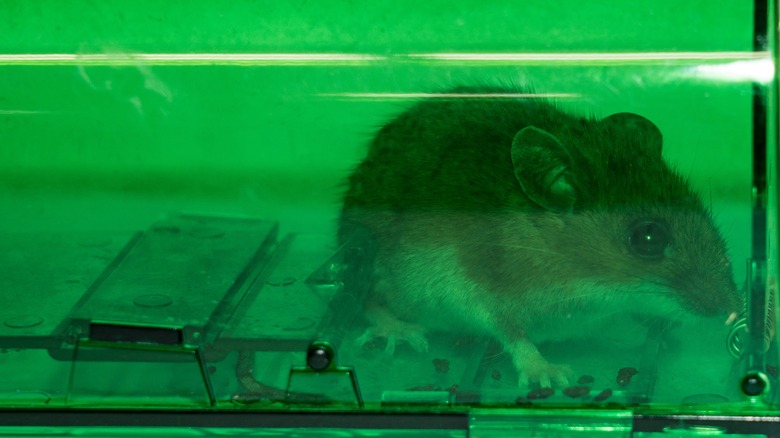The Major Drawback To Using Glue Traps For Mice, According To Our Pest Control Expert
We may receive a commission on purchases made from links.
Unless they're your beloved furry friends, rodents are not permitted in the house. Sorry, Mickey and Minnie Mouse. Glue traps are a popular method of getting rid of these creatures, but it turns out they are not the most effective option. In an exclusive House Digest interview, John D'Abruzzo, a pest control expert with Truly Nolen Pest Control, explained that glue traps only monitor the mouse issue instead of controlling it — and besides, he admitted, many do not see glue traps as the most humane option for pest control.
Glue traps are convenient for their set-it-and-forgot-it nature, but there are other methods that are more practical and just as easy to use. For example, some tips to keep mice out of your home and garden include blocking up places they can enter your home and keeping food off of counters and in waste bins. With good enough pest prevention, glue traps don't even need to enter the discussion, but sometimes it's too late and the critters are already inside. In that case, D'Abruzzo also shared an alternative to the sticky trap that can end your rodent fiasco. But first, let's hear about the major drawback of glue traps.
Glue traps won't prevent or control your mice issue
"Glue Boards are almost always used in pest control as a way of 'Monitoring' a pest issue, not 'Controlling' it," John D'Abruzzo exclusively told House Digest. D'Abruzzo calls them "passive traps," which means they're set up near suspected hotspots for critters and pests and then left alone. Once you check it again, you'll know how serious your issue is. But the trap itself does not stop rodents from entering your property, nor does it actively manage the ones already inside.
D'Abruzzo said that many do not consider glue traps to be the most humane option for dealing with pests. "Some do view the use of glue boards as unethical because whatever is caught in them does not die right away but is stuck until it starves to death, or another predator attacks it," he said. The animals can even rip their skin while attempting to escape from the adhesive. Scotland passed a ban on rodent glue trap sale and use in 2024, and politicians in New York state are attempting to do the same.
If you're going to use glue traps, D'Abruzzo advised, "Place them in areas where children or animals will not travel. Also, change them routinely when they become dusty or dirty so that they do not lose their efficacy." After you've caught a few pests, it's best to swap out for a new trap. However, there are more effective and humane methods for getting rid of mice.
Ways to eliminate and deter mice
"Whenever dealing with mice or rodents, the exclusion of a home's entry points is always the best solution," John D'Abruzzo shared in an exclusive House Digest interview. He said that mice only need a 1/4-inch opening and larger rodents a 1/2-inch opening to enter one's home. These critters can let themselves in through drainage pipes, gaps under doors, cracks in the walls, and spaces around windows. Closing these entrances can eliminate the rodents' access to your home.
The expert further shared, "Sanitation is also a key factor when dealing with controlling mice and rats; for example, do not allow rotted fruit from fruit trees to stay on the ground for any length of time. Mice and rodents have a keen sense of smell and love fermenting fruit." Pet food, bird seed, cereal, and deli meat are also common items that can attract mice to your home and garden. It helps to store these and similar products in containers the mice can't eat through. Keeping the floor and counters crumb-free can also help in managing the pest problem. If the critters are already inside, snap traps can be a better alternative to glue traps for controlling the invasion. Unlike glue traps, snap ones don't prolong the creatures' suffering.
Better yet, you could use humane traps like this two-pack sold at Walmart for about $11. Put strong-smelling bait like peanut butter inside these traps, and the doors will shut once a mouse enters. No killing required. Of course, if your pest problem persists, or if your critter invasion is severe and cannot be managed with a few traps, contact a pest control expert or an exterminator.


